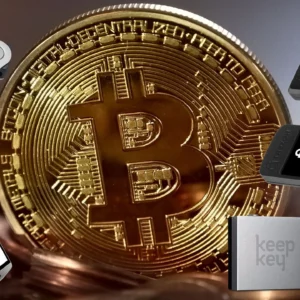Introduction
The financial landscape is undergoing a revolutionary transformation, and at the forefront of this change is Decentralized Finance (DeFi). By leveraging blockchain technology and smart contracts, DeFi aims to eliminate traditional intermediaries, offering a more accessible, transparent, and efficient financial ecosystem.
Unlike conventional finance, which relies on centralized institutions such as banks and brokerage firms, DeFi operates on decentralized networks, enabling users to engage in various financial activities—lending, borrowing, trading, and investing—without the need for third-party oversight.
This innovation promises to democratize access to financial services, allowing individuals worldwide to participate in a financial system that is permissionless, open, and resistant to censorship. However, with great innovation comes significant challenges, including regulatory concerns, security vulnerabilities, and market volatility.
In this article, we will explore the rise of Decentralized Finance (DeFi), its key benefits, challenges, and the potential future of this groundbreaking financial model.

The Rise of Decentralized Finance (DeFi)
The emergence of Decentralized Finance (DeFi) can be traced back to the early days of blockchain technology and the introduction of Bitcoin in 2009. While Bitcoin laid the groundwork for a decentralized currency, it was the advent of Ethereum and smart contracts in 2015 that paved the way for the rapid development of DeFi applications.
Smart contracts enable the execution of financial agreements without intermediaries, making it possible to build decentralized applications (DApps) that replicate traditional financial services in a trustless manner.
Over the past few years, Decentralized Finance (DeFi) has witnessed exponential growth. Protocols such as Uniswap, Aave, Compound, and MakerDAO have gained widespread adoption, allowing users to trade assets, earn interest, and borrow funds without the need for banks. The total value locked (TVL) in DeFi platforms has surged into the billions, highlighting the increasing trust and investment in this ecosystem.
The rise of DeFi has been fueled by several factors, including:
-
Financial Inclusion: DeFi removes barriers to entry, enabling individuals in underbanked regions to access financial services.
-
Censorship Resistance: Transactions in DeFi are executed on blockchain networks, making them immune to governmental or institutional censorship.
-
Permissionless Innovation: Developers can create and launch DeFi applications without seeking approval from centralized authorities.
-
Yield Farming and Staking: Users can earn passive income through liquidity provision and staking mechanisms.
As Decentralized Finance (DeFi) continues to expand, it is gradually reshaping how people interact with money and investments. However, its adoption is not without risks and challenges.
Key Benefits of Decentralized Finance (DeFi)
The appeal of Decentralized Finance (DeFi) lies in the numerous advantages it offers compared to traditional financial systems. Some of the most notable benefits include:
1. Financial Accessibility and Inclusion
One of the primary advantages of DeFi is its ability to provide financial services to anyone with an internet connection. Unlike traditional banking systems, which require users to have a bank account, credit history, or government-issued ID, DeFi platforms are permissionless, meaning they can be accessed by individuals worldwide, regardless of their socioeconomic background. This is particularly beneficial for populations in developing countries, where banking infrastructure is often limited or non-existent.
2. Transparency and Security
Transactions in Decentralized Finance (DeFi) are recorded on public blockchains, ensuring full transparency and immutability.
Unlike traditional banks, where financial operations are often opaque and controlled by centralized entities, DeFi allows users to verify and audit transactions in real time. Additionally, blockchain networks use cryptographic security measures to protect against fraud, making DeFi platforms less vulnerable to manipulation.
3. Reduced Costs and Faster Transactions
Traditional financial institutions charge various fees for services such as international transfers, loans, and trading. In contrast, DeFi operates without intermediaries, significantly reducing transaction costs.
Moreover, DeFi platforms leverage smart contracts to execute transactions automatically, eliminating delays associated with manual processing by banks and clearinghouses.
4. Control and Ownership of Assets
With Decentralized Finance (DeFi), users retain full control over their assets through non-custodial wallets. This is a significant shift from traditional banking, where funds are held by institutions that can freeze accounts or impose restrictions.
By using DeFi, individuals can manage their own funds, participate in decentralized lending and borrowing, and engage in peer-to-peer transactions without relying on third parties.
While these benefits make DeFi an attractive alternative to traditional finance, there are also several challenges that must be addressed for mass adoption.
Challenges Facing Decentralized Finance (DeFi)
Despite its promising potential, Decentralized Finance (DeFi) faces a number of challenges that could hinder its growth and adoption. Some of the major concerns include:
1. Regulatory Uncertainty
One of the biggest obstacles for DeFi is the lack of clear regulatory frameworks. Since DeFi operates in a decentralized manner, it challenges traditional financial regulations that were designed for centralized institutions. Governments and regulatory bodies worldwide are struggling to determine how to oversee DeFi platforms, which raises concerns about compliance, taxation, and investor protection.
2. Smart Contract Vulnerabilities
While smart contracts are a key component of Decentralized Finance (DeFi), they are not immune to security flaws. Bugs or vulnerabilities in smart contract code can be exploited by hackers, leading to significant financial losses. Several DeFi platforms have suffered from security breaches, underscoring the need for rigorous code audits and security enhancements.
3. Market Volatility and Risks
The DeFi ecosystem is closely tied to the broader cryptocurrency market, which is known for its volatility. Price fluctuations in digital assets can lead to liquidations in DeFi lending protocols, causing users to lose their collateral. Additionally, some DeFi projects have been exposed as scams or “rug pulls,” where developers abandon a project after raising significant funds from investors.
4. Scalability Issues
Many DeFi applications operate on the Ethereum blockchain, which has faced congestion and high gas fees due to network limitations. These scalability issues make it expensive and inefficient for users to interact with DeFi platforms.
Despite these challenges, the DeFi space continues to evolve, with developers and innovators working on solutions to enhance security, scalability, and regulatory compliance.
The Future of Decentralized Finance (DeFi)
As Decentralized Finance (DeFi) matures, its potential to redefine the global financial system becomes increasingly evident. Several emerging trends and innovations could shape the future of DeFi, including:
-
Integration with Traditional Finance: As regulatory frameworks develop, we may see greater collaboration between DeFi and traditional financial institutions, bridging the gap between centralized and decentralized finance.
-
Growth of Layer 2 Solutions: Technologies like rollups and sidechains are expected to improve scalability and reduce transaction costs, making DeFi more accessible to mainstream users.
-
Institutional Adoption: More institutional investors are exploring DeFi as an alternative investment opportunity, bringing additional liquidity and credibility to the sector.
-
Interoperability: The development of cross-chain protocols will enable seamless interaction between different blockchain networks, expanding DeFi’s reach beyond Ethereum.
While challenges remain, the continued innovation within DeFi suggests that it will play a pivotal role in the future of finance. The question is not whether DeFi will succeed, but rather how it will evolve to meet the demands of an increasingly digital world.
Conclusion
Decentralized Finance (DeFi) is more than just a trend—it is a transformative movement that has the potential to reshape global financial systems. By providing open, transparent, and permissionless financial services, DeFi empowers individuals with greater financial autonomy and opportunities.
However, the journey toward mainstream adoption is still in progress. Challenges such as regulatory uncertainty, security risks, and scalability must be addressed for DeFi to achieve its full potential. Nevertheless, the ongoing innovations and growing interest in DeFi suggest a bright future ahead.
What are your thoughts on the future of Decentralized Finance (DeFi)? Do you see it as the future of finance, or do you believe traditional banking will always have the upper hand? Let us know in the comments below!







This Post Has One Comment